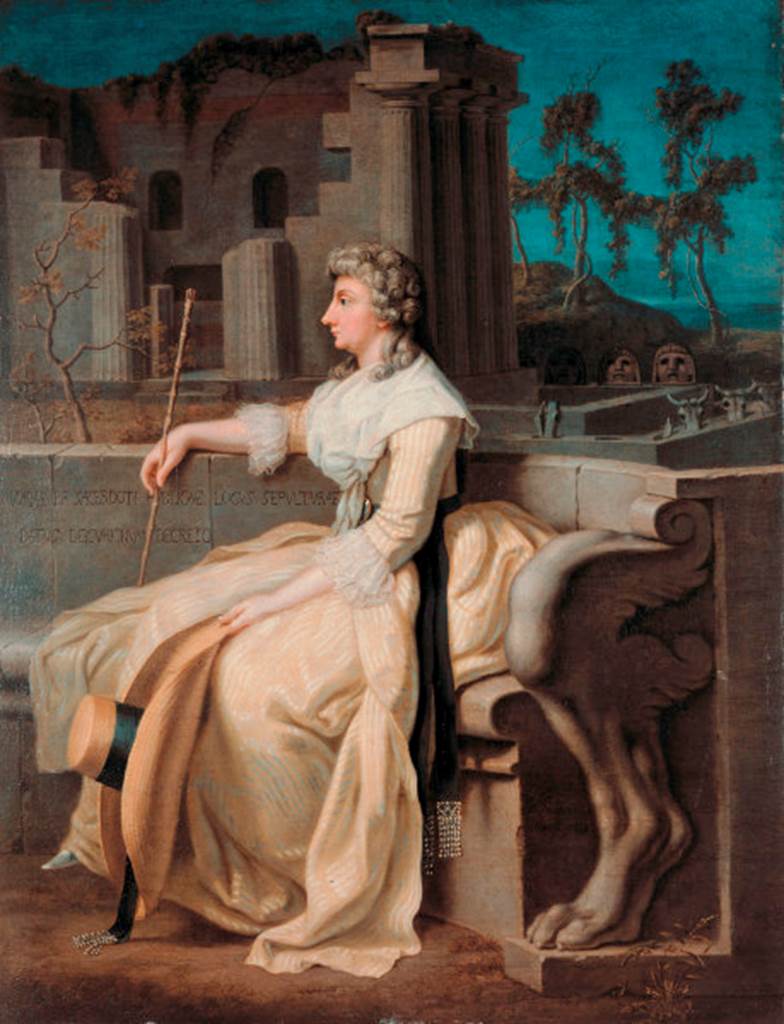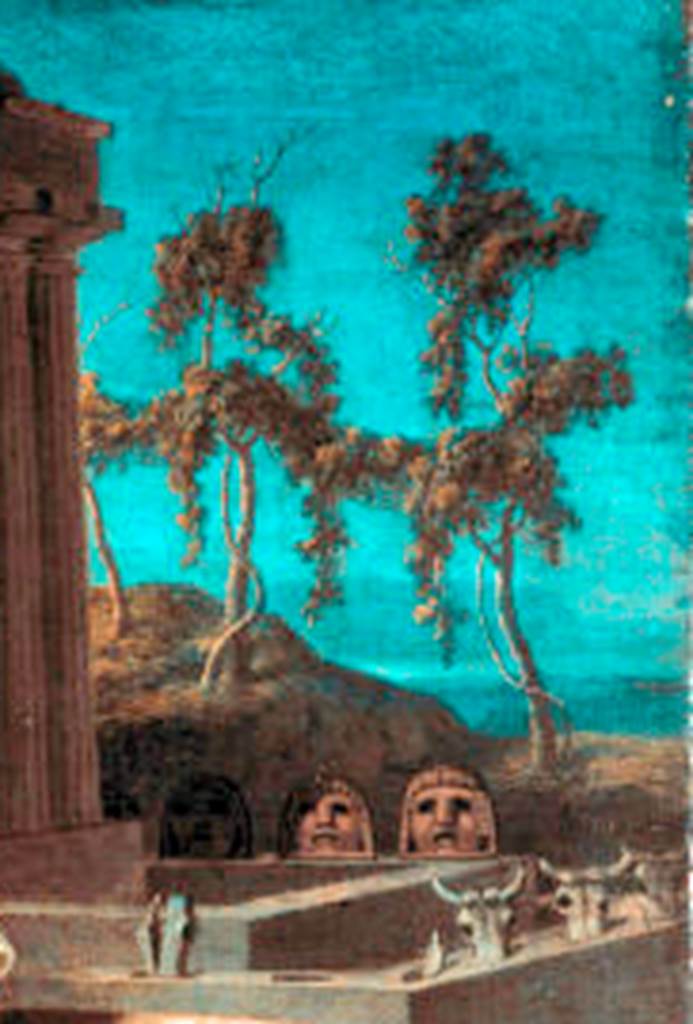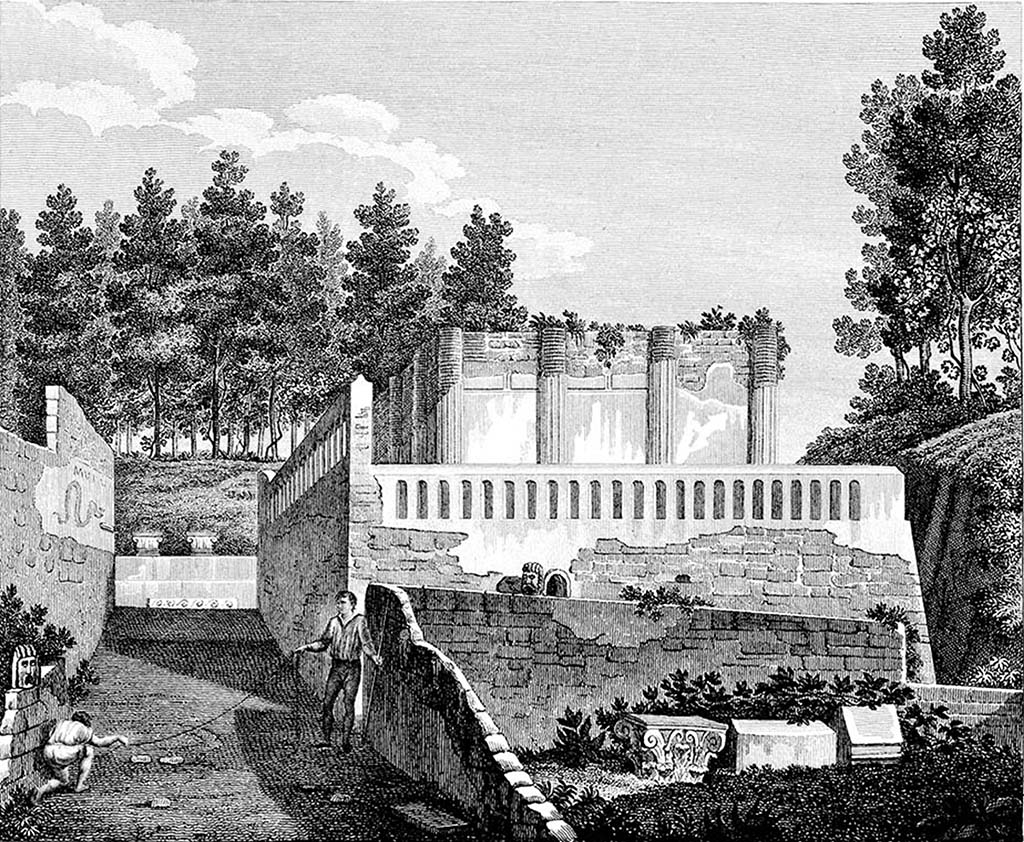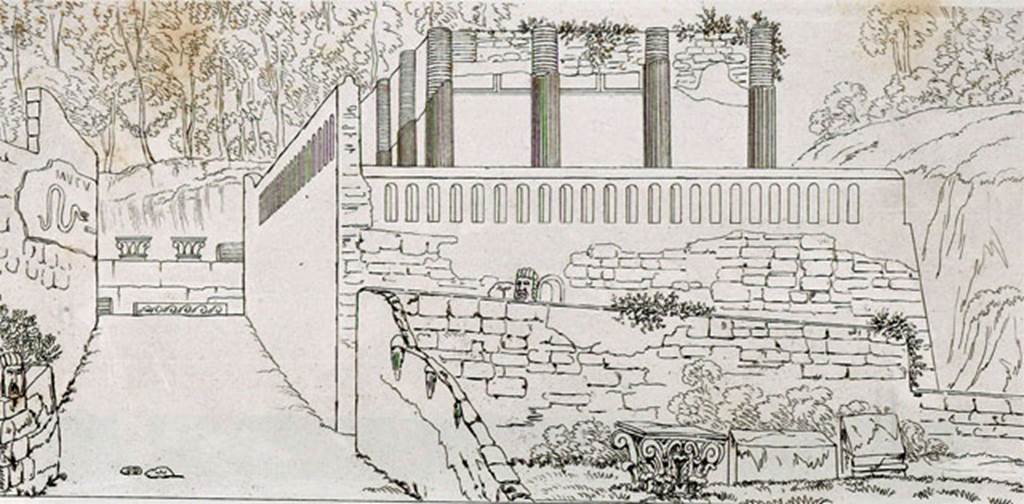HGW04d Pompeii. Herculaneum Gate West Side. Sepolcro di bestiami.
(Eschebach does not list separately from West 4, Kockel Süd 4D).
Excavated 1770. The area is today reburied.

HGW04d Pompeii. Plan of area outside Porta Ercolano. The tomb is number 32.
See Fiorelli G., 1860. Pompeianarum
antiquitatum historia, Vol. 1: 1748 - 1818, Naples, Tab. III.

HGW04d Pompeii. 1770 description of the finding of the tomb.
There are skulls fixed in the top of the wall, which seem to be of an ox.
See Fiorelli G.,
1860. Pompeianarum antiquitatum historia,
Vol. 1: 1748 - 1818, Naples, 239, 12 May 1770.
![]()

HGW04d Pompeii. 1770 addenda description of the finding of the tomb, number 32 on the plan.
Here it is uncertain whether the skulls are of horses or of other animals.
The jaws are hammered into the top of the wall and the rest sticks out.
See Fiorelli G.,
1860. Pompeianarum antiquitatum historia,
Vol. 1: 1748 - 1818, Naples, 2 Addenda, 116, 12 May
1770.
![]()
HGW04d Pompeii. 1770 addenda description of the finding of the skull of an ox in the wall of the tomb.
See Fiorelli G.,
1860. Pompeianarum antiquitatum historia,
Vol. 1: 1748 - 1818, Naples, 2 Addenda, 155, 12 May
1770.

HGW04d Pompeii. 1789 painting by J. W. H. Tischbein.
In the background can be seen a representation of the bovine skulls that gave the tomb its name.
See Kockel V., 1983. Die Grabbauten vor dem Herkulaner Tor in Pompeji. Mainz: von Zabern. (taf. 13b).
There seems to be some artistic licence with this representation.
The side door of HGW04a is on the east side and cannot be seen, as shown, from the schola which is on the north side.
HGW04d and the masks of HGW04c are shown to the north of HGW04a rather than the south.
The wording on the schola is in small letters rather than the large letters on HGW04.

HGW04d Pompeii. 1789 painting by J. W. H. Tischbein.
Detail of the bovine skulls that gave the tomb its name.

HGW04d Pompeii. 1809-11. Drawing by Mazois.
According to Mazois “The drawing offers the sight of the tomb of Mamia on the side of the sepulcretum;
one can notice on the right, in the wall which separates this place from the street, several heads of animals encrusted,
and which seem intentionally put to form a manner of decoration rather suitable at a place devoted to the burials.
In the surroundings were several vault openings. It was impossible for me to find them”
See Mazois, F.,
1812. Les Ruines de Pompei: Premiere
Partie. Paris: Didot Frères. (p. 28, Pl. X).

HGW04d Pompeii. 1817 engraving which shows the wall with several heads of animals encrusted, as described by Mazois.
See Cooke, Cockburn and Donaldson, 1827. Pompeii Illustrated: Vol. II. London: Cooke. (pl. 23).